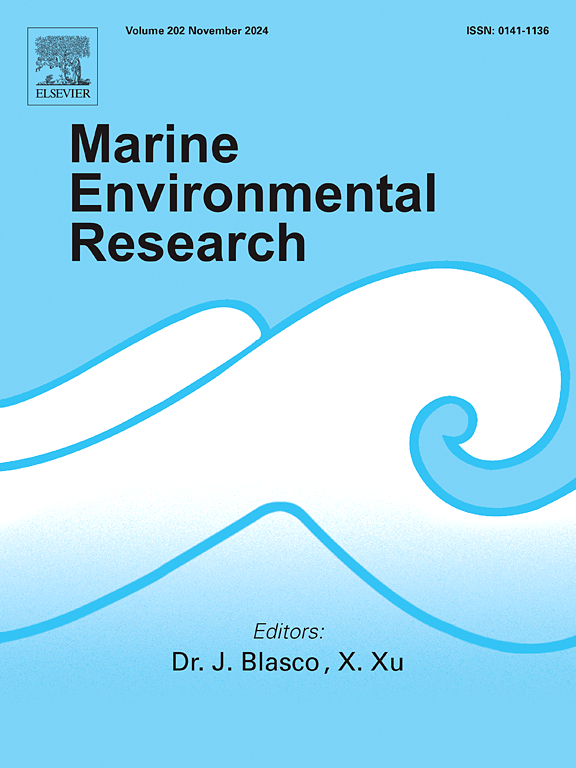Tidal dynamics and seasonal hydrological variations influencing organic carbon distribution in the Yangtze River estuary
IF 3
3区 环境科学与生态学
Q2 ENVIRONMENTAL SCIENCES
引用次数: 0
Abstract
The carbon cycle process in coastal areas is extremely complex due to the coupled hydrodynamic interactions between terrestrial and marine systems. To study the spatiotemporal variations of organic carbon and their influencing mechanisms, dissolved and particulate organic carbon (DOC, POC) in water, total organic carbon (TOC) in surface sediments, water quality parameters, and sediment grain size composition were measured in five coastal sites from the Yangtze River estuary (YRE). Generalized linear mixed-effects (GLMM) model was used to identify potential processes that explained these spatiotemporal patterns. The results showed that seasonal hydrological characteristics and tidal fluctuations had a significant effect on the concentrations of DOC, POC, and TOC (p < 0.001). Temporally, DOC concentrations were higher in wet season; POC concentrations were higher in dry season; TOC varied little between seasons. The maximum values of DOC and POC were observed at spring and moderate tides, respectively, whereas TOC increased significantly at neap tides. Furthermore, random forest model indicated that salinity and dissolved oxygen (DO) of water were the key drivers of DOC concentrations, while temperature, salinity and DO were the key drivers of POC, and temperature and salinity was the key driver of TOC (p = 0.01). Overall, results from this study highlight the importance of water quality and hydrodynamic factors in the variation of organic carbon, as organic carbon concentrations are influenced by multiple factors that change on both seasonal scales and tidal cycles. This study provides valuable insights into effects of environmental factors on the spatiotemporal distribution of organic carbon in coastal areas.
求助全文
约1分钟内获得全文
求助全文
来源期刊

Marine environmental research
环境科学-毒理学
CiteScore
5.90
自引率
3.00%
发文量
217
审稿时长
46 days
期刊介绍:
Marine Environmental Research publishes original research papers on chemical, physical, and biological interactions in the oceans and coastal waters. The journal serves as a forum for new information on biology, chemistry, and toxicology and syntheses that advance understanding of marine environmental processes.
Submission of multidisciplinary studies is encouraged. Studies that utilize experimental approaches to clarify the roles of anthropogenic and natural causes of changes in marine ecosystems are especially welcome, as are those studies that represent new developments of a theoretical or conceptual aspect of marine science. All papers published in this journal are reviewed by qualified peers prior to acceptance and publication. Examples of topics considered to be appropriate for the journal include, but are not limited to, the following:
– The extent, persistence, and consequences of change and the recovery from such change in natural marine systems
– The biochemical, physiological, and ecological consequences of contaminants to marine organisms and ecosystems
– The biogeochemistry of naturally occurring and anthropogenic substances
– Models that describe and predict the above processes
– Monitoring studies, to the extent that their results provide new information on functional processes
– Methodological papers describing improved quantitative techniques for the marine sciences.
 求助内容:
求助内容: 应助结果提醒方式:
应助结果提醒方式:


